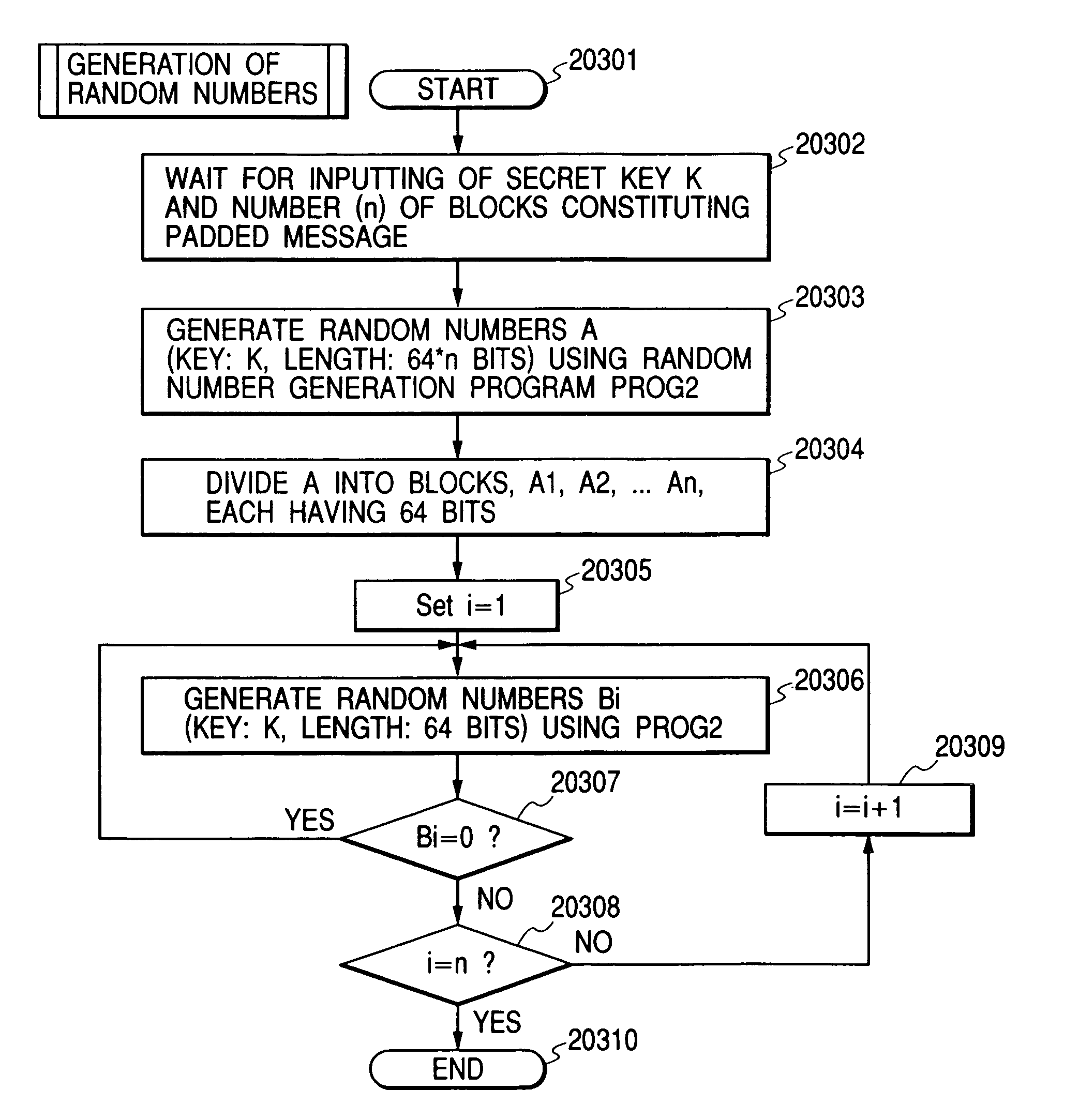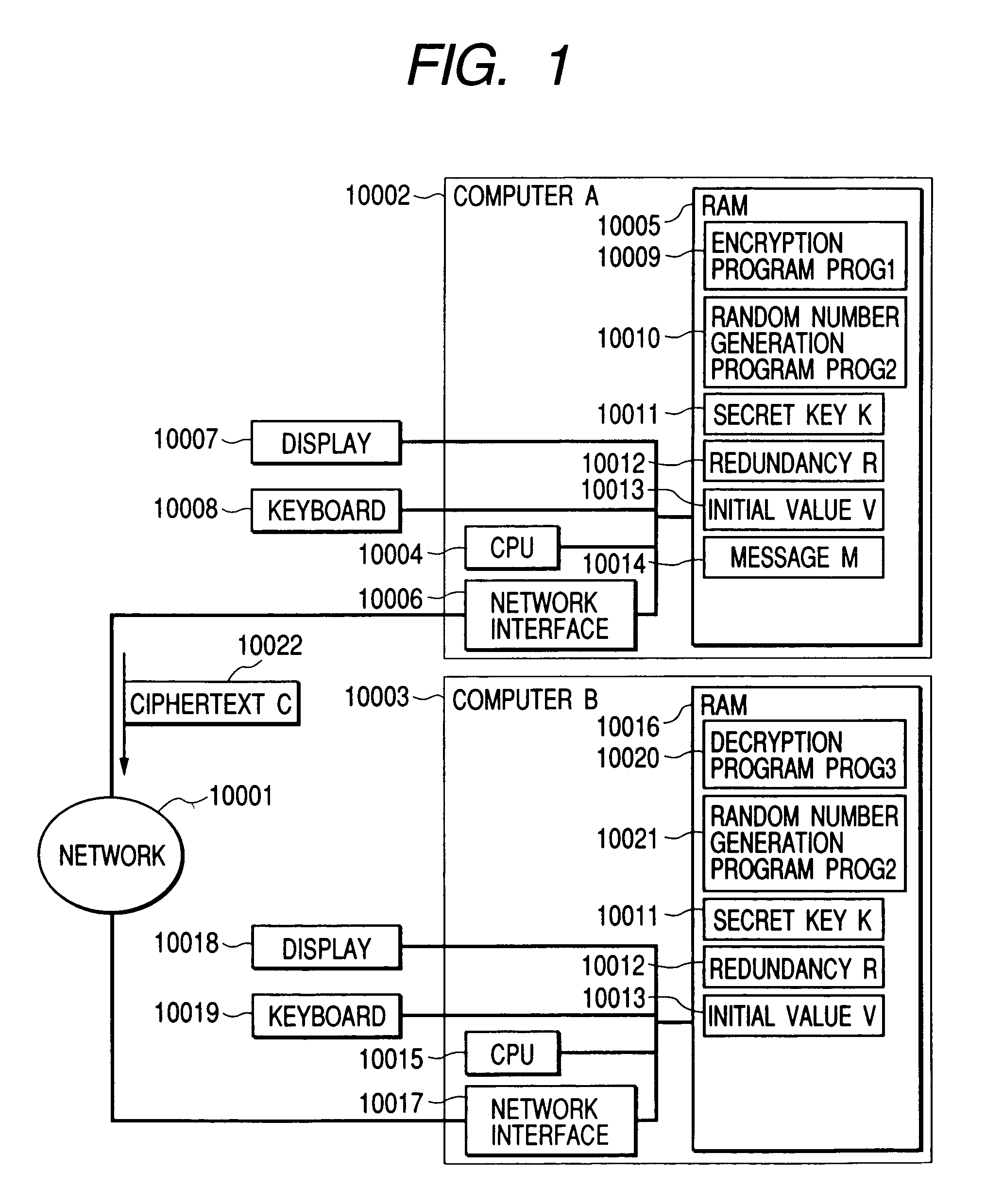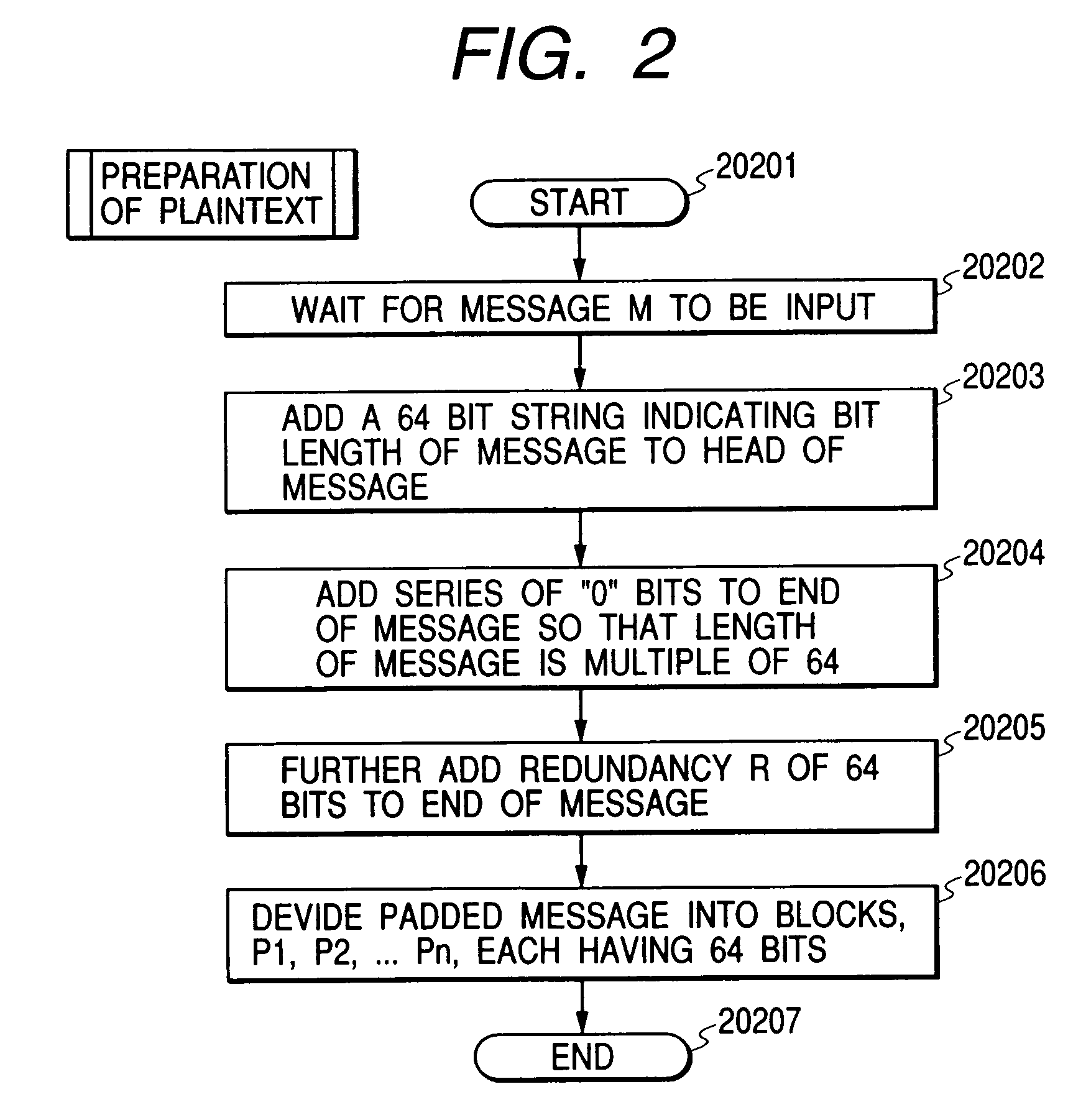Method and apparatus for symmetric-key encryption
- Summary
- Abstract
- Description
- Claims
- Application Information
AI Technical Summary
Benefits of technology
Problems solved by technology
Method used
Image
Examples
first embodiment
[0113]FIG. 1 shows the configuration of a computer system including a computer A10002 and a computer B10003 connected to each other through a network 10001 for cryptocommunications from the computer A10002 to the computer 10003. The computer A10002 has an operation unit (hereinafter referred to as “CPU”) 10004, a memory unit (volatile or nonvolatile, hereinafter referred to as “RAM”) 10005, and a network interface 10006 therein, and a display 10007 and a keyboard 10008 externally connected thereto for the user to operate the computer A10002. The RAM 10005 stores an encryption program PROG1_10009, a random number generation program PROG2_10010, a secret key K10011, which is secret information shared only between the computers A10002 and B10003, a redundancy R10012 and an initial value V10013, which both are data shared between the computers A10002 and B10003, and encryption-target data 10014 to be transmitted to the computer B1003. The computer B10003 has a CPU 10015, a RAM 10016, an...
second embodiment
[0186]As describe below, a second embodiment of the present invention employs a function different from that used by the first embodiment. By employing this function, the second embodiment can reduce the number of random numbers necessary to use, and use the same divisor for each iteration in its decryption process, which makes it possible to perform the division operation at substantially the same speed as that of a multiplication operation if the reciprocal is calculated beforehand, resulting in very efficient processing.
[0187]The second embodiment employs an encryption program PROG1A and a decryption program PROG3A instead of the encryption program PROG1 and the decryption PROG3, respectively.
[0188]The encryption program PROG1A replaces the random number generation subroutine 20004 and the encryption subroutine 20005 employed in the encryption program PROG1_10009 in FIG. 1 by a random number generation 2 subroutine 21004 and an encryption 2 subroutine 21005, respectively.
[0189]De...
third embodiment
[0234]As described below, a third embodiment of the present invention uses another high-speed processing function to provide processing at higher speed with the same security level as those of the first and the second embodiments. In another aspect, the third embodiment can provide higher security equivalent to F2128 if operations in the finite field F264 employed in the first and second embodiments are also used.
[0235]In the aspect of providing processing at higher speed described above, the third embodiment uses an operation in the finite field F232 twice. Since multiplication in the field F264 generally requires a computational amount (computational complexity) four times as much as that for the finite field F232, the third embodiment requires only half ((¼)*2) of the computational amount (computational complexity) required by an operation in the finite field F264, actually doubling the processing speed.
[0236]In the aspect of enhancing security, the third embodiment can use both ...
PUM
 Login to View More
Login to View More Abstract
Description
Claims
Application Information
 Login to View More
Login to View More - R&D
- Intellectual Property
- Life Sciences
- Materials
- Tech Scout
- Unparalleled Data Quality
- Higher Quality Content
- 60% Fewer Hallucinations
Browse by: Latest US Patents, China's latest patents, Technical Efficacy Thesaurus, Application Domain, Technology Topic, Popular Technical Reports.
© 2025 PatSnap. All rights reserved.Legal|Privacy policy|Modern Slavery Act Transparency Statement|Sitemap|About US| Contact US: help@patsnap.com



